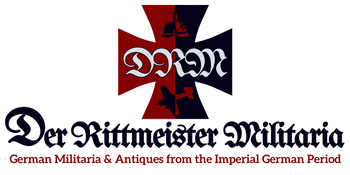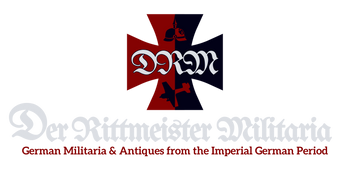Württemberg (Königreich Württemberg)
CLICK HERE FOR ALL PRODUCTS RELATED TO WURTTEMBERG
Basic Information
- Official Name: Kingdom of Württemberg (Königreich Württemberg)
- Capital: Stuttgart
- Motto: "Furchtlos und treu" (Fearless and Faithful)
- Established: 1806 as a kingdom (earlier as a duchy in 1495)
- Dissolution: Became the Free People's State of Württemberg in 1918 following the abdication of King Wilhelm II.
-
Key Symbols:
- Coat of Arms: Features two golden lions supporting a shield with three black antlers on a gold field.
- Flag: Black and red horizontal stripes.
Geographical Overview
-
Location:
Württemberg was located in southwestern Germany, bordered by Baden to the west, Bavaria to the east, and Hohenzollern to the south. -
Size:
A medium-sized state known for its fertile land, vineyards, and rolling hills. -
Land Features:
- Black Forest (Schwarzwald): Famous for its dense forests and natural beauty.
- Neckar River: A lifeline for trade and agriculture in the region.
- Swabian Alps (Schwäbische Alb): Limestone hills providing stunning vistas and resources.
Historical Timeline
-
Early Württemberg:
- 1080: First mention of the Counts of Württemberg in historical records.
- 1495: Württemberg was elevated to a duchy within the Holy Roman Empire.
-
Duchy of Württemberg (1495–1806):
- 1534: Württemberg adopted Lutheranism during the Protestant Reformation.
- 1740s: The duchy modernized its administration and economy, becoming a regional power.
-
Kingdom of Württemberg (1806–1918):
- 1806: Württemberg became a kingdom under Napoleon’s Confederation of the Rhine. Frederick I was its first king.
- 1815: Joined the German Confederation after Napoleon’s defeat.
- 1871: Entered the German Empire while retaining internal autonomy.
-
Decline (1918):
- King Wilhelm II abdicated during the German Revolution, and Württemberg transitioned into a democratic Free People's State.
Notable Rulers and Leaders
- Frederick I (1806–1816): Established Württemberg as a kingdom, consolidating power and modernizing the state.
- Wilhelm I (1816–1864): Promoted education, infrastructure, and economic reform.
- Karl I (1864–1891): Known for his patronage of the arts and cultural development.
- Wilhelm II (1891–1918): The last king, ruled during a period of relative peace until World War I.
Military and Political Strength
-
Military Contributions:
- Württemberg maintained its own army, integrated into the German Imperial Army during wartime.
- Renowned for its infantry and cavalry units.
-
Political Role:
- Retained significant autonomy in the German Empire, especially in cultural and educational matters.
- Known for a progressive constitution, granting civil liberties and promoting parliamentary governance.
Cultural Contributions
-
Architecture:
- Stuttgart Palace (Neues Schloss): A Baroque masterpiece reflecting Württemberg’s royal grandeur.
- Hohenzollern Castle: A medieval fortress on the border with the Hohenzollern region.
-
Art and Literature:
- Württemberg was the birthplace of prominent figures such as Friedrich Schiller, one of Germany’s greatest poets and playwrights.
- The state fostered Swabian folk traditions, including storytelling and music.
-
Education and Science:
- Home to the University of Tübingen, one of Germany's oldest and most prestigious universities.
- Württemberg excelled in engineering, contributing to Germany’s industrialization.
-
Cuisine:
- Known for its hearty dishes like Spätzle (egg noodles) and Maultaschen (Swabian ravioli).
- Famous for its vineyards, producing high-quality red and white wines.
Fall of Württemberg
-
World War I (1914–1918):
- Economic hardship and military losses weakened the monarchy.
-
German Revolution (1918):
- Peaceful abdication of King Wilhelm II led to the establishment of a republican government.
-
Post-WWII (1945):
- Württemberg was divided into American and French occupation zones before becoming part of modern Baden-Württemberg in 1952.
Connections to Products
-
Military Memorabilia:
- Württemberg Military Crosses: Issued for bravery and service during conflicts.
- Distinctive Württemberg infantry helmets, known for their elegant designs.
-
Cultural Artifacts:
- Swabian Folk Art: Items like carved wooden toys or decorative household items.
- Documents and collectibles related to Friedrich Schiller and his literary legacy.
-
Architectural Models:
- Miniature replicas of Stuttgart Palace or Hohenzollern Castle for collectors.
-
Wine and Culinary Items:
- Wine-related memorabilia such as vintage labels, corkscrews, and glassware tied to Württemberg's rich winemaking heritage.













